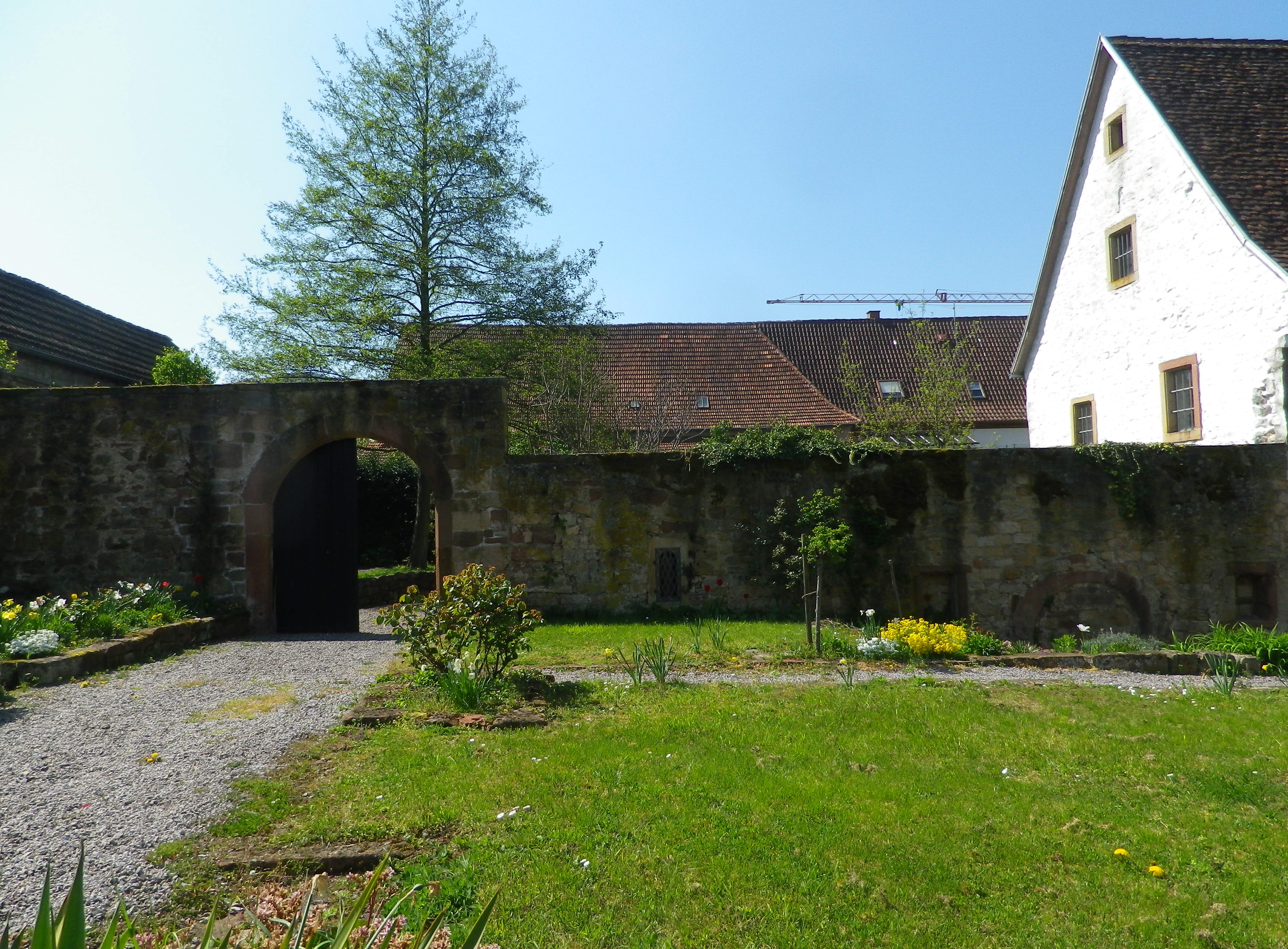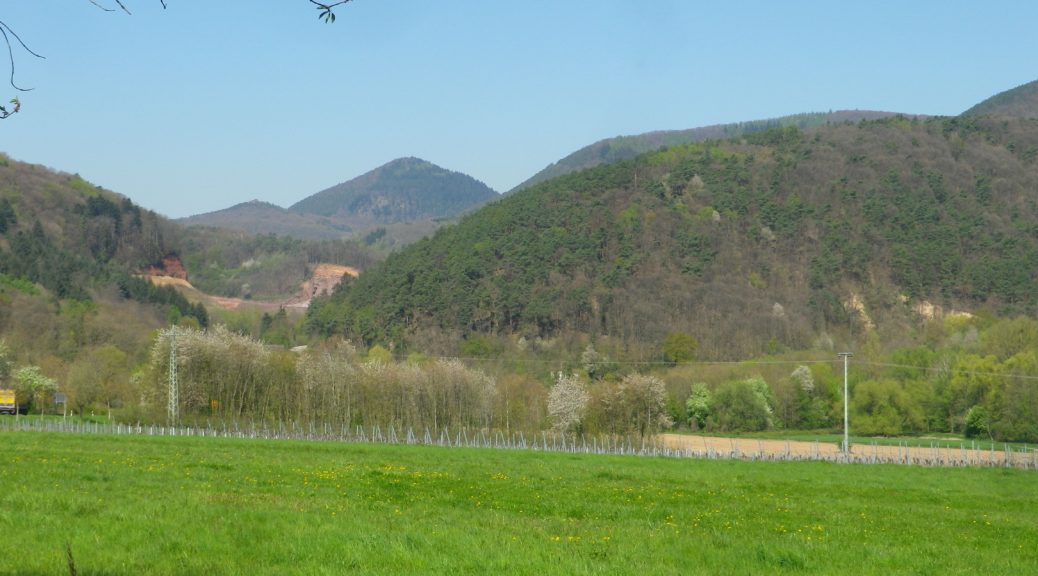Spring blooms relatively early in the southern Pfalz. First, and perhaps the most spectacular of all, are the almond blossoms. Beginning in early March and continuing until mid-April, the profuse, brilliantly pink flowers seen against a cerulean blue sky, are a gorgeous sight. This magnificent spectacle prompted a long-distance hiking trail entitled the Pfaelzer Mandelpfad, or the Pfalz Almond Trail. While I unfortunately arrived just as the pink almond blossoms had faded, I could see the next tree blossoms on deck: the delicately colored white apple tree blossoms.
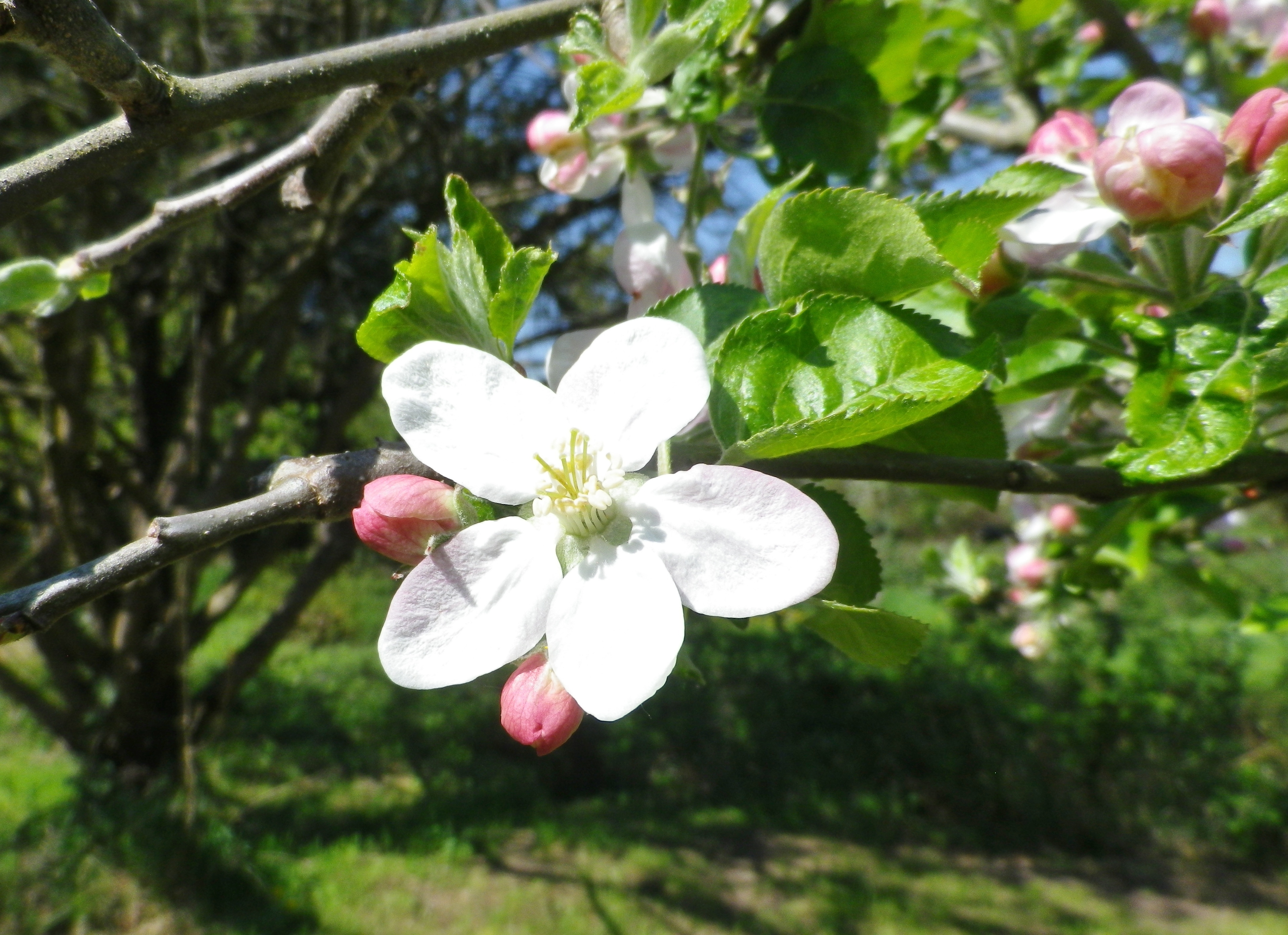
But no hike this time, so I am leaving the Almond Trail for later. I was there to bike, to get ready for another season of cycling wine-themed trails. For the first ride of the season, I went to the area of the southern wine route in the Suedliche Weinstrasse wine region of the Pfalz. The trail I chose was a perfect “warm-up” trail, the Fassboden 3 trail. Not too long, not too challenging, just enough to start to get back into cycling shape. The trail made a nice circuit through the villages at the foot of the Haardt mountains, in and around the hills between the Aalmuehl, the Kaiserbach and Klingbach streams.
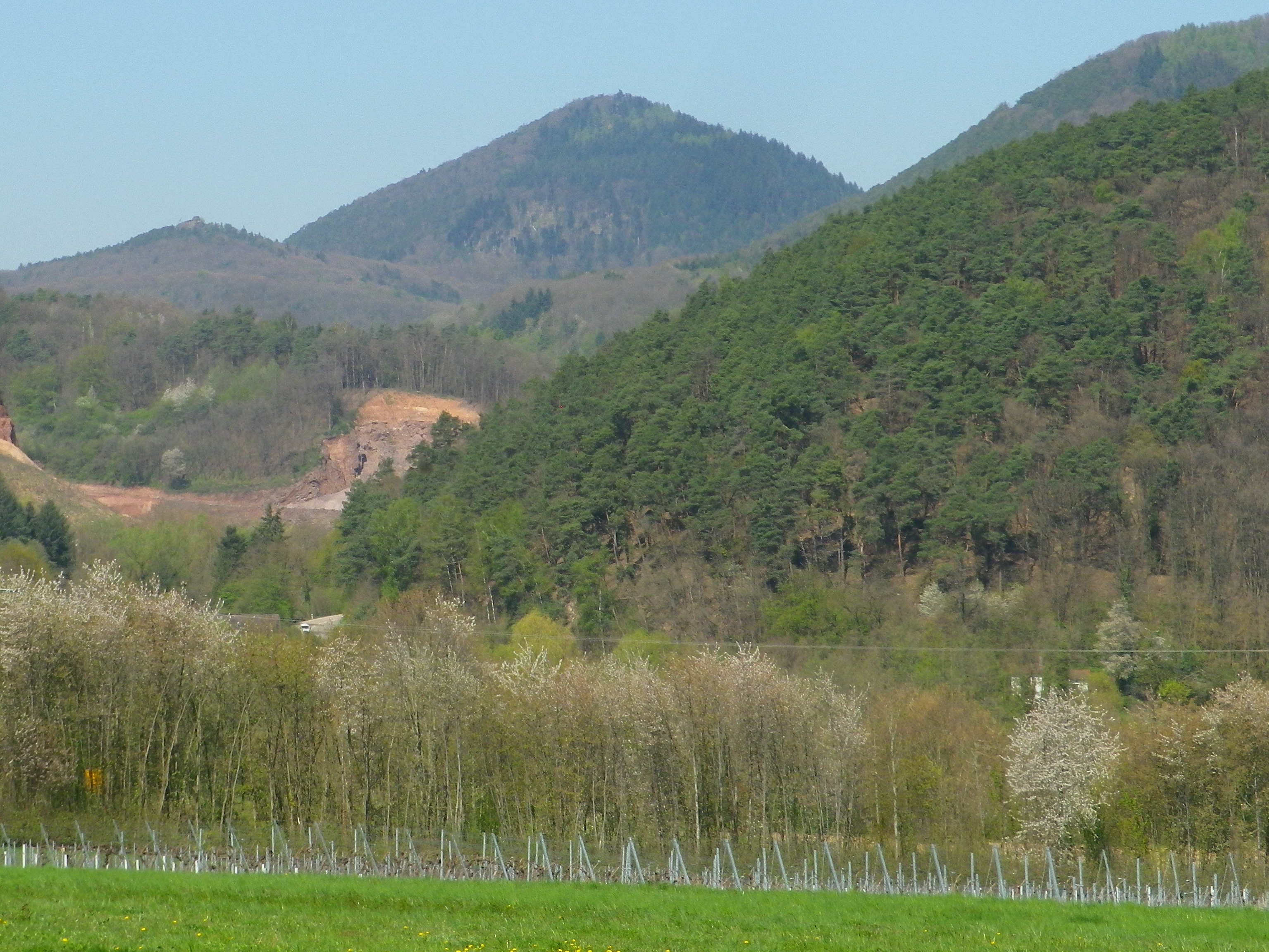
The trail’s official start, in Klingenmuenster, did necessitate a more challenging start than hoped for, being all uphill to the Pfalzklinikum, for about 1.5 kilometers. But that helped to remind me why I was there in the first place: to warm up for more challenging routes in the near future. The reward at the top of the incline is a wonderful panoramic view, north and south, of this section of the German Wine Route (Deutsche Weinstrasse).
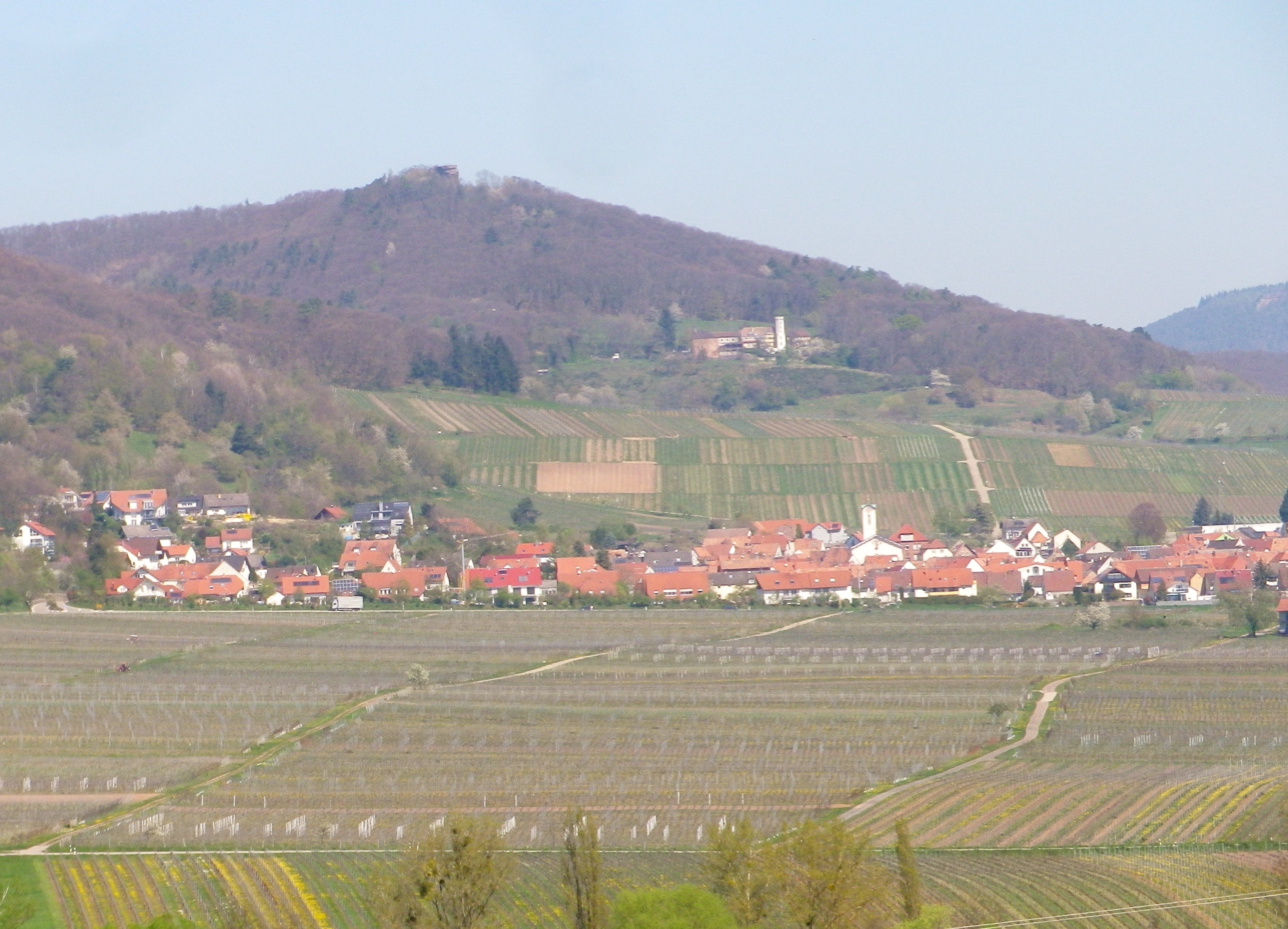
As the cycle path descended toward Eschbach, the vines began in earnest. In fact, many of the grapes grown along this bike route are destined for the Deutsche Weintor winery. It is by far the largest winery in the area, and the route passes directly by the main facility in Kleine Kalmit (Grosskelterei)/Ilbesheim bei Landau. (The more famous facility is about 10 miles away in Schweigen-Rechtenbach, at the iconic Deutsche Weintor.)
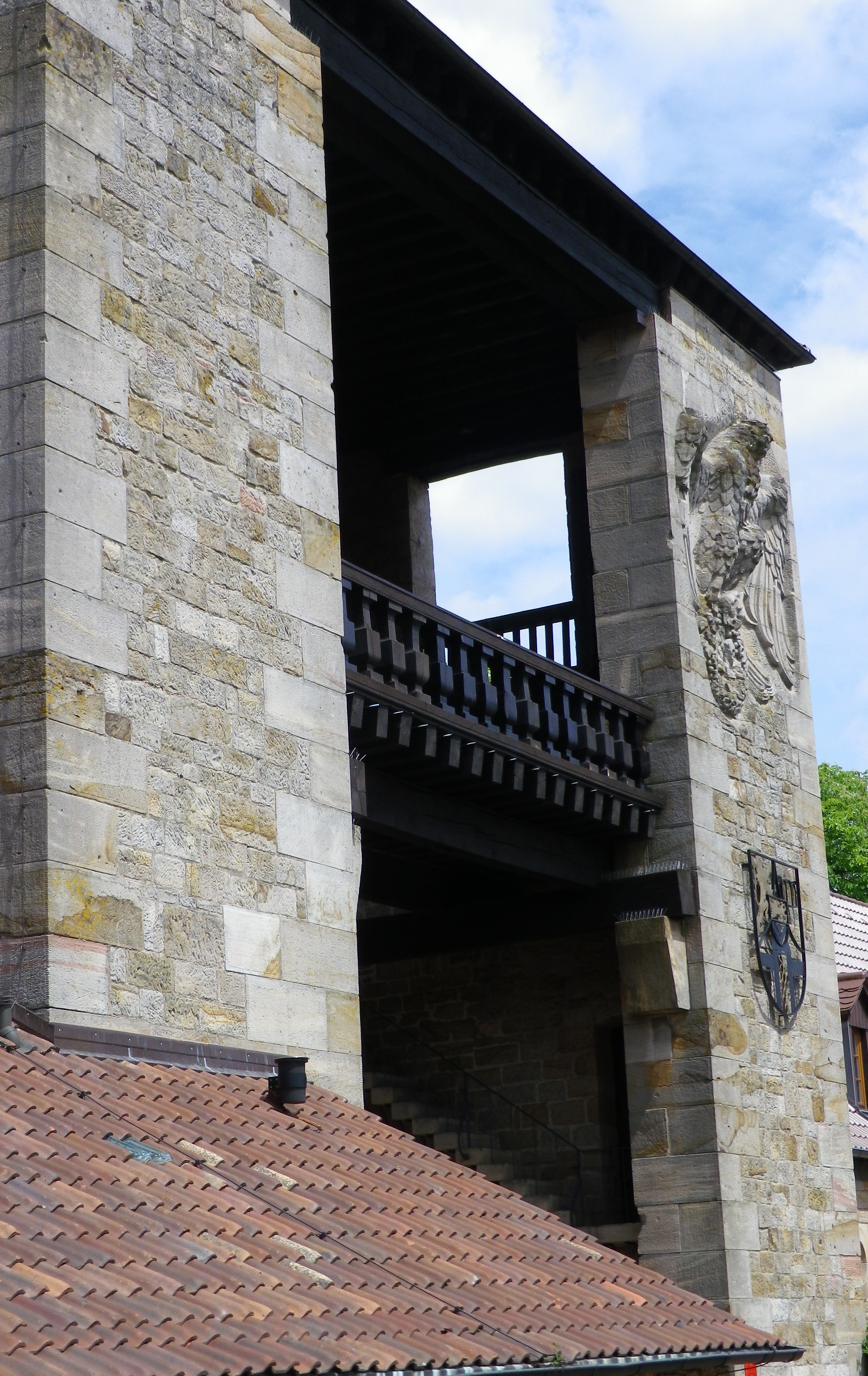
After another climb, the route rewards cyclists with a picnic table set beneath a large tree, which would afford one of the few bits of shade along the trail. Set amidst nothing but vines, the view of the nearby Haardt peaks is unobstructed. To the northwest lies the village of Leinsweiler at the foot of the Foerlenberg peak, the white towered-Slevogthof, former residence of the artist Max Slevogt, indicating the middle ground between the two.
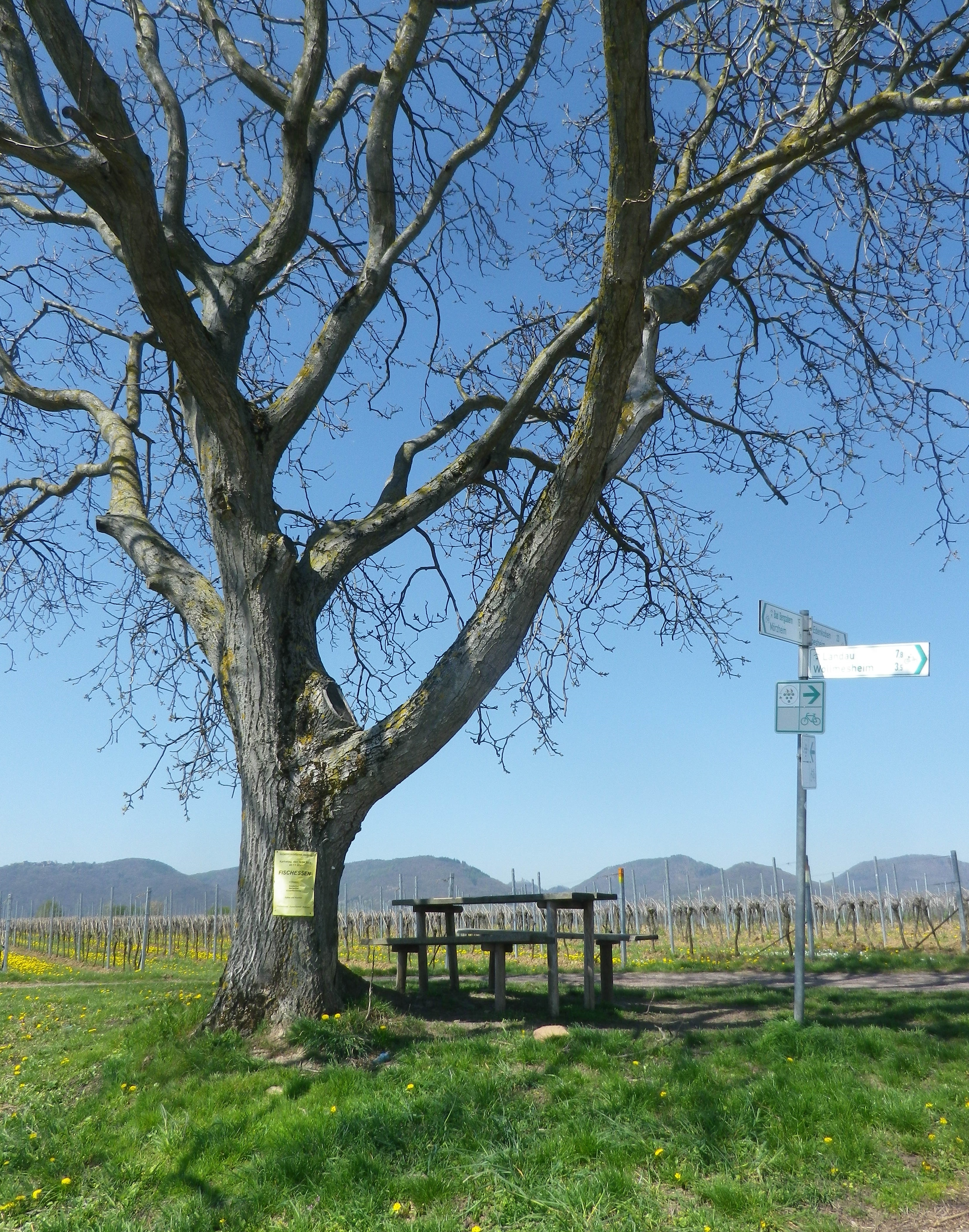
The path into Goecklingen also gave me an opportunity to test out my new brake pads. The village itself is nestled in the valley of the Kaisersbach. Coming upon it via the trail provided a great photo shots. (See the featured photo, and the photo below, to see the contrast.) The narrow streets, utterly deserted at lunch-time, were completely devoid of traffic. But soon back into vineyards, the low rumble of tractors indicated that the vintners had already returned to work.
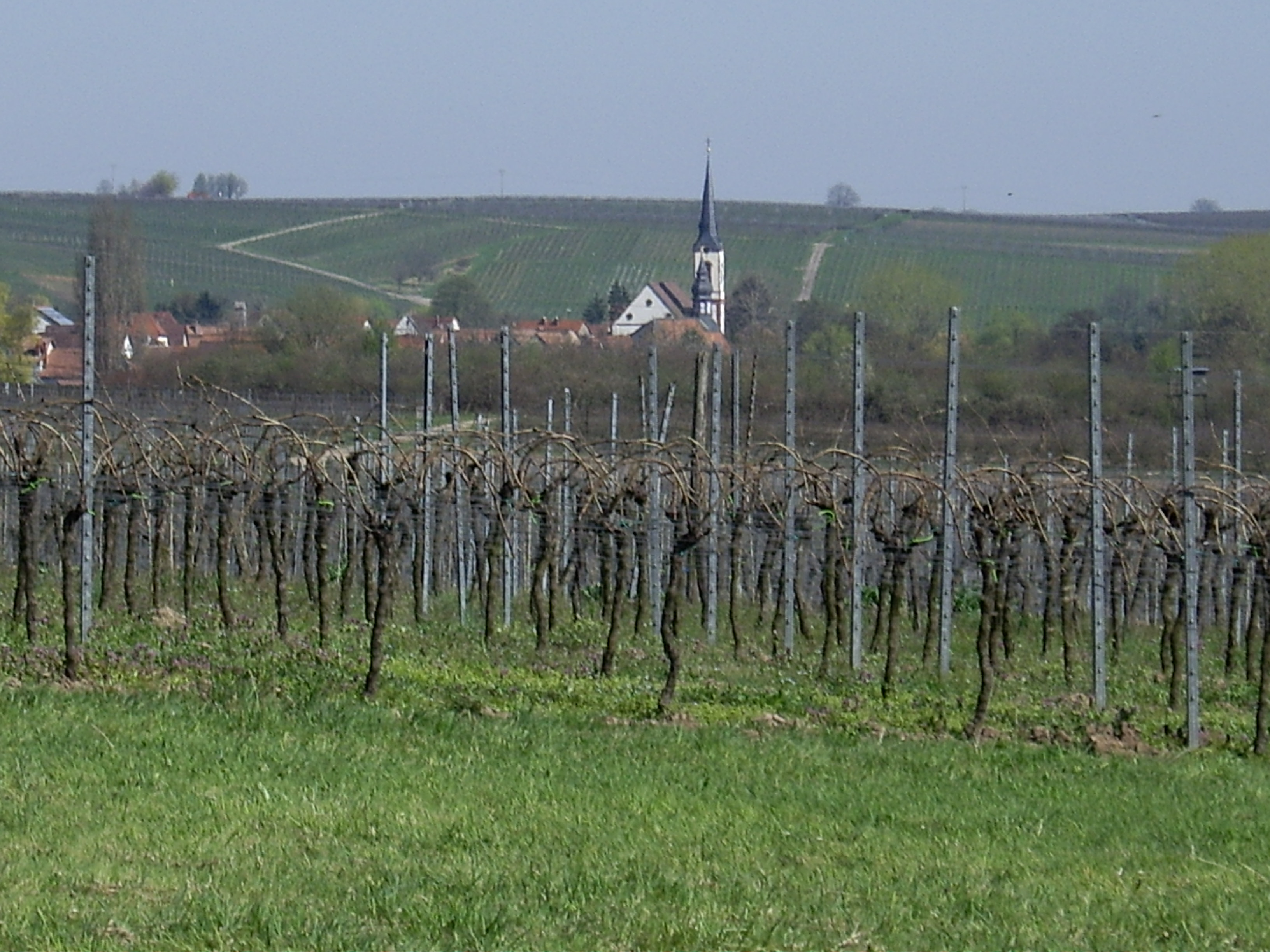
Appenhofen is the furthest point out. From there, the trail heads back, fairly directly, to Klingenmuenster. Through vineyards and fields, on almost exclusively bike path, it is a pleasant way to finish a bike tour. Klingenmuenster’s main street can be quite busy, especially in summer, and during the harvest-festivals in the fall. But fortunately, the trail only follows on this road for a couple hundred meters. The start/end point is dominated by the remains of the large former monastery, dating to around 800 A.D., if not earlier. The old walls and gateways provide photographic opportunities, and hold wineries, wine bars, cafes and restaurants in their shadows, which are all great places to end a bike ride!
